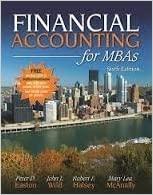Answered step by step
Verified Expert Solution
Question
1 Approved Answer
Way Cool produces two different models of air conditioners. The company produces the mechanical systems in their components department. The mechanical systems are combined with





Way Cool produces two different models of air conditioners. The company produces the mechanical systems in their components department. The mechanical systems are combined with the housing assembly in its finishing department. The activities, costs, and drivers associated with these two manufacturing processes and the production support process follow. Process Components Activity Changeover Machining Setups Driver Number of batches Machine hours Number of setups Quantity 800 6,000 120 Finishing Welding Inspecting Rework Overhead Cost $ 500,000 279,000 225,000 $1,004,000 $ 180,300 210,000 75,000 $ 465,300 $ 135,000 32,600 65,000 $ 232,000 Welding hours Number of inspections Rework orders 3,000 700 300 Support Purchasing Providing space Providing utilities Purchase orders Number of units Number of units 450 5,000 5,000 Additional production information concerning its two product lines follows. Units produced Welding hours Batches Number of inspections Machine hours Setups Rework orders Purchase orders Model 145 1,500 800 400 400 1,800 60 160 Model 212 3,500 2,200 400 300 4,200 60 140 150 300 Required: 1. Determine departmental overhead rates and compute the overhead cost per unit for each product line. Base your overhead assignment for the components department on machine hours. Use welding hours to assign overhead costs to the finishing department. Assign costs to the support department based on number of purchase orders. 2. Determine the total cost per unit for each product line if the direct labor and direct materials costs per unit are $250 for Model 145 and $180 for Model 212 3. If the market price for Model 145 is $820 and the market price for Model 212 is $480, determine the profit or loss per unit for each model. Required: 1. Using a plantwide overhead rate based on machine hours, compute the overhead cost per unit for each product line. Overhead costs 0 per machine hour Machine hours 2. Determine the total cost per unit for each product line if the direct labor and direct materials costs per unit are $250 for Model 145 and $180 for Model 212. Overhead Assigned Activity Driver Plantwide OH rate Total Overhead Cost Units Produced OH Cost per unit Model 145 $ 0 Model 212 $ 0 Model 145 Model 212 0 3. If the market price for Model 145 is $820 and the market price for Model 212 is $480, determine the profit or loss per unit for each model. Model 145 Model 212 Market price Required 1 Required 2 Required 3 Determine departmental overhead rates and compute the overhead cost per unit for each prode assignment for the components department on machine hours. Use welding hours to assign ove department. Assign costs to the support department based on number of purchase orders. (Rou calculations and per unit cost answers to 2 decimal places. Components department 0 Finishing department 0 Support department 0 Model 145 Activity Driver Departmental OH Rate Total Overhead Cost $ 0 Components Finishing Support $ 0 0 Model 212 Activity Driver Departmental OH Rate Total Overhead Cost $ 0 Components Finishing Support $ 0 0 Required 1 Required 2 Required 3 Determine the total cost per unit for each product line if the direct labor and 145 and $180 for Model 212. (Round your intermediate calculations and cost Model 145 Model 212 Materials and Labor per unit Overhead cost per unit Total cost per unit
Step by Step Solution
There are 3 Steps involved in it
Step: 1

Get Instant Access to Expert-Tailored Solutions
See step-by-step solutions with expert insights and AI powered tools for academic success
Step: 2

Step: 3

Ace Your Homework with AI
Get the answers you need in no time with our AI-driven, step-by-step assistance
Get Started


